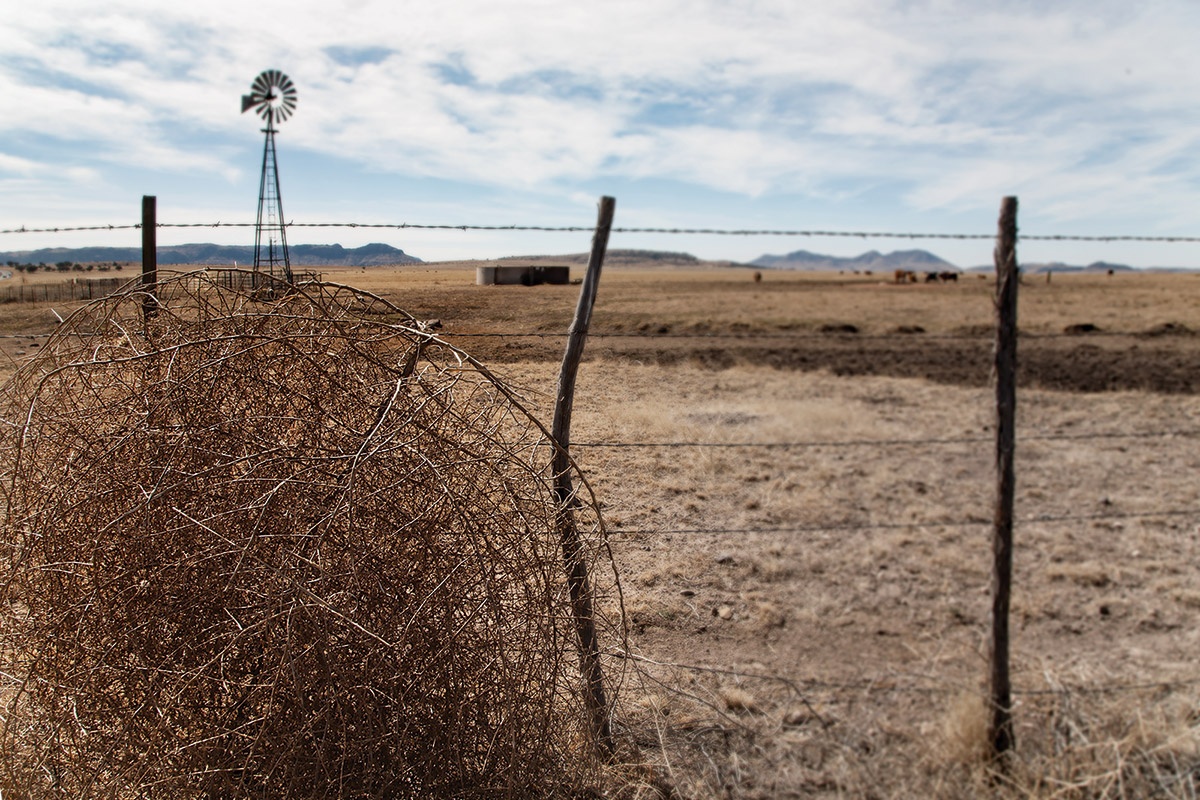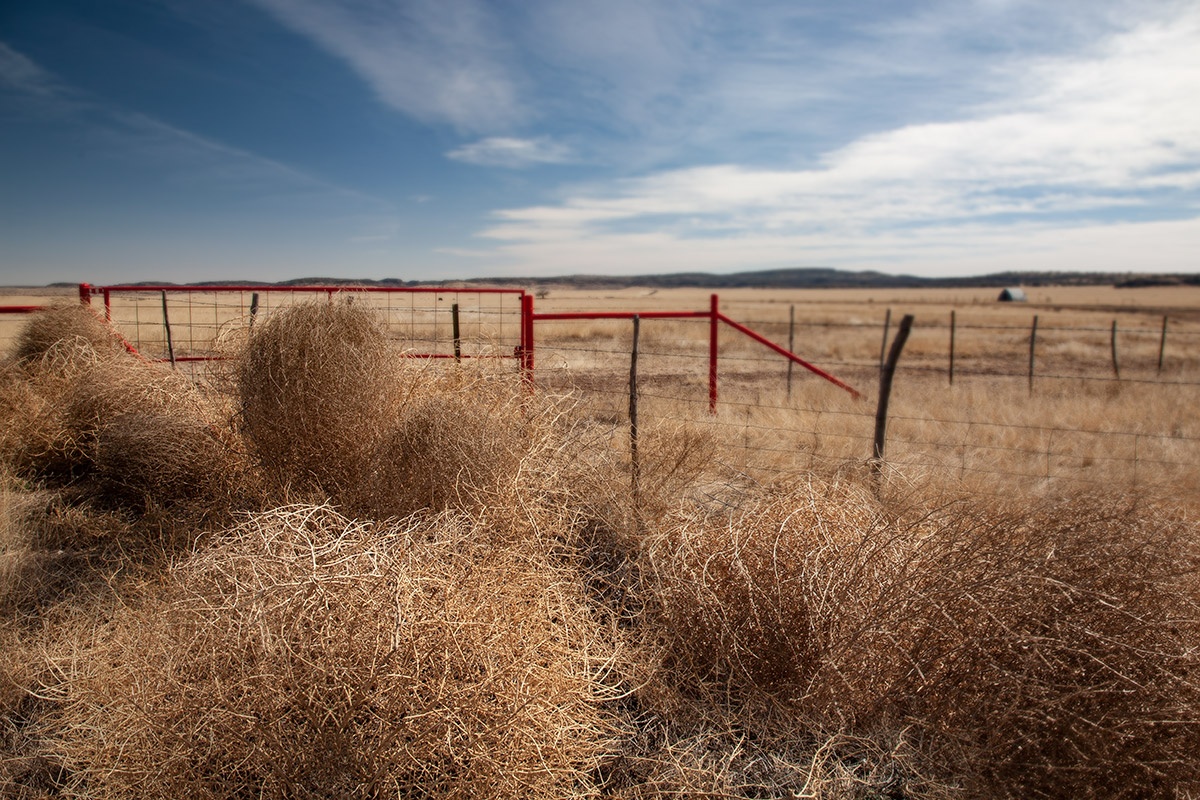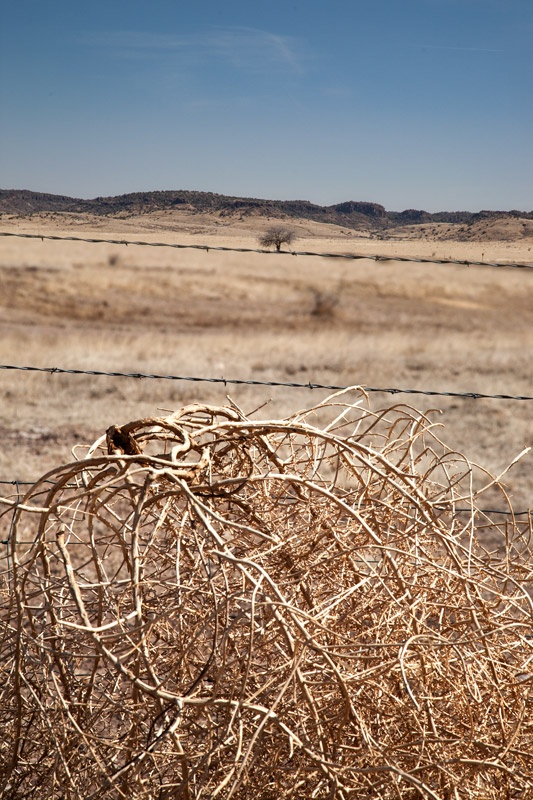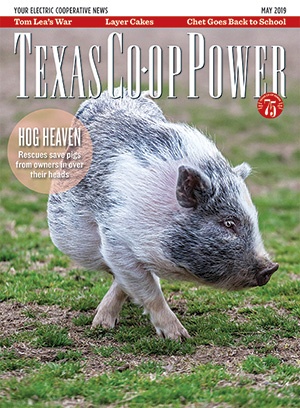The winter traffic jam along U.S. Highway 67, the blacktop spanning Big Bend country between Marfa and the border town of Presidio, surprised everyone. Deputy sheriffs lined the roadway, slowing vehicles to a crawl before moving them forward one at a time. Dozens of pickups and SUVs waited their turn, causing a temporary delay for cowboys, tourists and laborers. Backups, rare on this isolated stretch of road where sweeping grasslands rise toward the Chinati Mountains, are usually caused by a wayward cow.
This time, the culprit was a herd of tumbleweeds blown loose from a fence line, impeding drivers’ views and rolling willy-nilly up and down the highway.
In another disruption that occurred in the past century, the tumbleweed escaped its humble origins as a nuisance weed and evolved into an allegorical icon of frontier mythology, representing the loner, the drifter and the rambling spirit. The weed’s rise in status can be attributed to its nomadic movements that represent the ambition to wander. Its motion seems to be driven by a supernatural force as it appears and vanishes in the most isolated and unlikely places, inspiring some folks to call it a “windwitch.” It embodies the magical and the mundane, as common as a dandelion yet representing our desire to be free.
Tumbleweeds and Texas go hand in hand, especially in the western half of the state, where they thrive along roadsides. The plants love disturbed, loosened soil in vacant lots, fallow agricultural fields and railroad sidings. Seeds require only the slightest bit of water to germinate and can send a taproot down to subsurface moisture in 12 hours. Heat tolerant and fast growing, tumblers are bushy, spiny weeds that have been known to reach more than 6 feet in diameter. They dry out in the fall before detaching from the soil surface and, propelled by the wind, roll across the countryside scattering seeds.
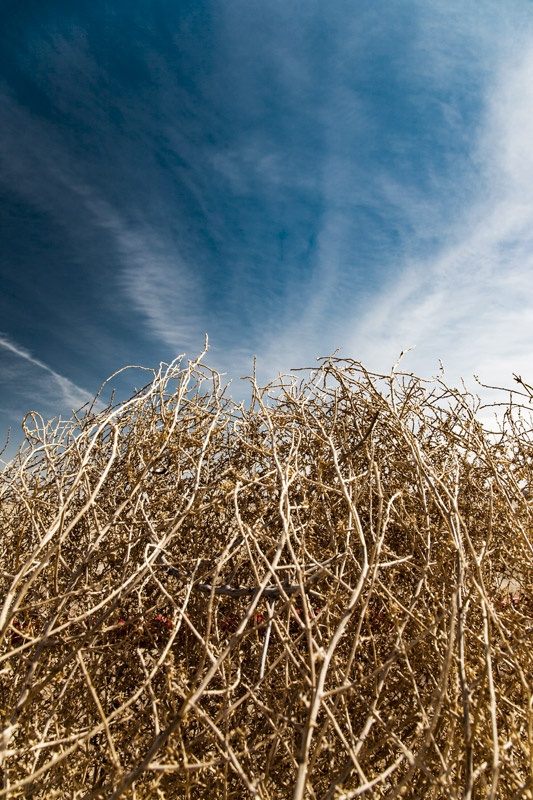
Web Extra: Tumbleweed between Marfa and Fort Davis.
E. Dan Klepper
In West Texas, this journey typically ends at a fence line, where hundreds of wayward tumbleweeds might gather for the winter. The weeds remain there, piled in rows, until a change in the wind and weather sends them all at once on their way again. The spontaneous migration can be impressive, creating sudden and sizable disruptions, such as the U.S. 67 traffic jam. Massive tumbleweed movements can even surround homes and barns, creating a fire hazard or impeding access like flood debris sent adrift and then lodged against itself in the wake of a hurricane.
As a member of the goosefoot family, the Texas tumbleweed is actually a Russian thistle, introduced to America in 1873 by contaminated flaxseed. Russian immigrants settling in South Dakota brought flax with them, unwittingly casting tumbleweed seeds into the soil as well. The Siberian native, capable of producing around a quarter-million seeds per plant, was originally dispersed by wind, railroad livestock cars and farming operations, including threshers and their traveling crews.
Before long, tumbleweeds could be found throughout the settled frontier. Hardy, invasive and drought-resistant, tumbleweeds quickly earned a reputation as an agricultural pest.
“Tumbleweeds may be pesky, but cows love ’em,” says William Holt Jowell, a retired Midland cattleman. “I used to raise Texas registered longhorns, and they would clear a pasture of young tumbleweed sprouts in short order, making livestock the best defense against the weed. But as soon as I moved the cattle out of the pasture, guess who’s back: tumbleweeds.”
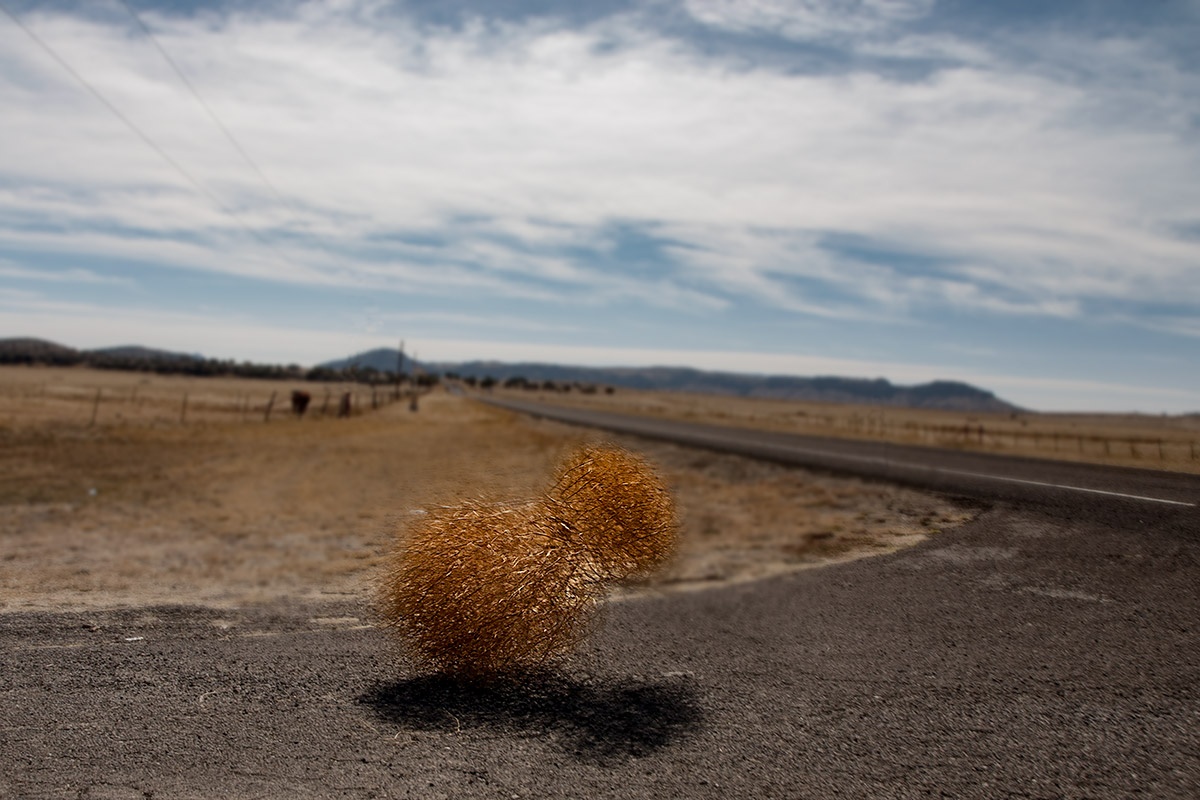
Web Extra: Tangled tumbleweeds between Marfa and Fort Davis.
E. Dan Klepper
As the tumbleweed’s notoriety advanced, so did its stature in the zeitgeist of the American West. The bundle of twigs was immortalized early in the 20th century by the Sons of the Pioneers, a western singing group with its own century-spanning legacy. Although the lineup has changed since their debut in 1933, the Pioneers continue to sing the western classic Tumbling Tumbleweeds. “See them tumbling down, pledging their love to the ground,” the song begins. “Lonely but free, I’ll be found drifting along with the tumbling tumbleweeds.”
The weed’s celebrity doesn’t end with a song. Tumbleweeds have appeared as character “actors” in films and on television, including appearances in dozens of classic and contemporary Westerns, commercials and cartoons. They often have been employed to suggest emptiness, making a tumbling sphere of thistle one of the most recognizable cultural symbols of isolation. The metaphor is at odds with the truth, considering that the tumbleweed is now one of the country’s most common weeds.
The U.S. 67 traffic jam eventually cleared up, thanks in part to the steadfast direction of law enforcement and collaborating drivers. The tumbleweeds cooperated as well, pausing in their migration as the wind subsided, vacating the blacktop to gather in roadside ditches or up against another fence line. The cessation would hold, at least as long as the weather did, before the wind began to stir the grasslands, signaling a change in the air, turning the windmill blades before sending the tumbleweeds tumbling once again toward the horizon, aimless and carefree.
E. Dan Klepper is a photographer, author and artist who lives in Marathon.
